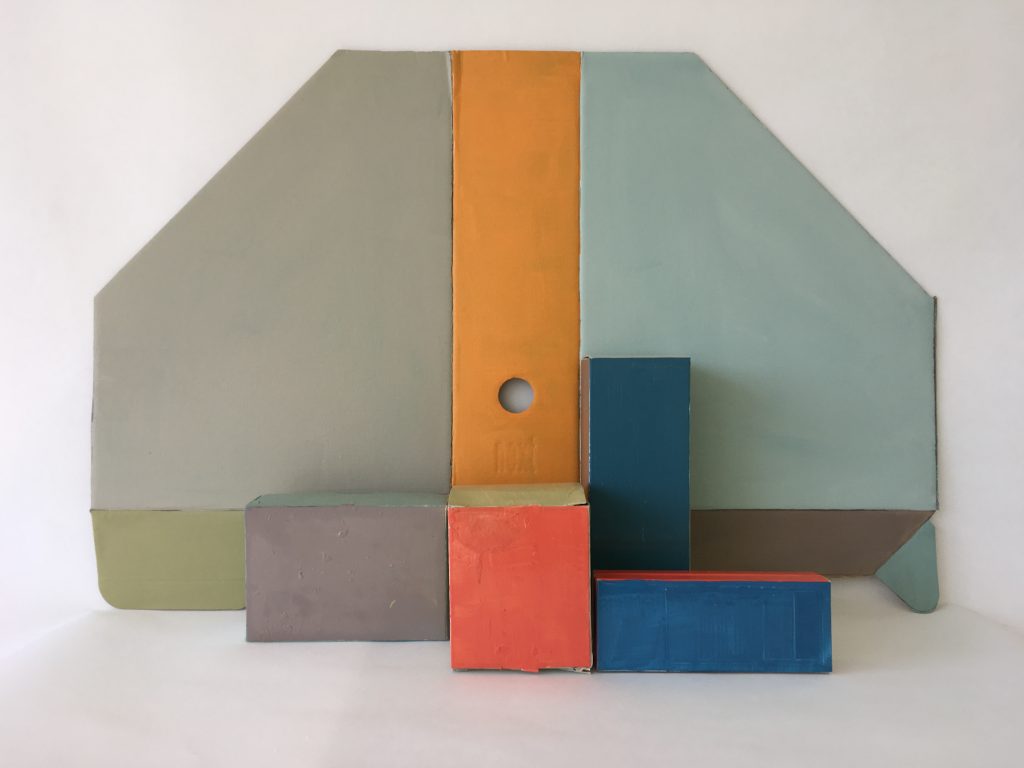Marion Landry
contact
MFA Studio #36
landry@ecuad.ca
marion@marionlandryart.com
Website
http://www.marionlandry.com/
Instagram
https://www.instagram.com/marionlandry/
@MarionLandry
#MLArtProjects, #MarionLandryArt, #MarionLandry
Bio
Marion Landry (b.1974, Montreal; lives/works: Vancouver) is an artist who uses geometrical form as primary language of expression. Her paintings explore ambiguous spaces while drawing parallels with the nature of perception. She holds a BFA from Emily Carr University of Art + Design (2016), and diplomas in Design from Cégep du Vieux Montréal (1991-1993) and 2D-3D animation from ICARI (1996). In 2019, she attended a residence in Athens Greece which culminated in an exhibition of her work. Landry’s exhibitions include South Main Gallery, Vancouver (2018), Seymour Art Gallery, Vancouver (2016) and Art Mûr, Montréal (2016). Landry is producing work as a settler on the unceded territories of the Coast Salish peoples, including the Musqueam, Squamish and Tsleil-Waututh nations.
Keywords for your practice/research
Painting, geometry, boundary, perception, ambiguity, installation, light.
Research questions
The overall nature of my investigation is to expand painting beyond the surface of the canvas to include the structural elements on which a painting is produced. By “structure” I mean the measurement marks needed to paint the geometrical shapes, the objects and studies created during production process, the space in which the work is presented, as well as the light that brings to the eye of the observer. Can my installations become more immersive and go beyond the visual senses? Can the meditative aspect of production be translated into the installation in order to offer a meditative space for the viewer?
Studio Actions
Series
I paint in series. A series starts with an inquiry that a painting attempts to answer. I learn by doing and being immersed. I often interpret a series as a community of work from which a larger painting is nurtured and grows.

Large Scale Painting
The action of painting starts on an unstretched canvas that is stapled directly to the wall. I use no tape in my painting compositions but instead traced the geometrical patterns with coloured pencils. The wall provides the necessary hardness to trace straight lines onto a soft surface. The first layer tends to be the most opaque of the composition, migrating toward thinner and more transparent layers on the foreground. Each layer requires drying time and therefore painting is a slow and meditative process for me. I mix the pigments with a medium concoction that I have developed over the years which allows for enough consistency to paint vertically while providing flexible levels of transparency. Being mindful of light interacting with my work, I play with different levels of glossy and matte medium that either reflect or absorb the light. The use of colour gradients is also an important element in my work, and the area in which the colours meet tends to become the focal point of the painting. Additionally, with layers of transparent geometrical shapes I blur, distort, and obscure pictorial plane by filtering the viewing experience.
To create Illusion of space and depth within my compositions, I tend to rely on form rather than colour. I often overlay multiple layers of the same colour in varying degrees of transparency to merge the intersection where the layers converge. I paint between the lines free hand in a fine painterly manner that is detailed and time consuming. As a result, softness and imperfection can be observed at close range. I intentionally leave the line work and measurement marks to reveal the structure and reveal clues about the process.

Boxes
During production I salvage left over paints and apply them to cardboard, metal and plastic boxes that I collect. I have an affinity for and find they have the capacity to suggest meaning on their own. I think that their 2 dimensionality is a fascinating way to build structure and intention from a 2D world to a 3D one. While painting them conceals their origins it has the potential to reveals their more formal beauty. Most of the boxes in my studio are from personal purchases or possessions, which speaks to the sheer volume of human consumption, our learned and engineered habits, as well as our impact in our environment.
These boxes are either collapsed or kept as 3D objects that I later assemble into small scenes. The tactile nature of these assemblies provides me with a way to think through the conceptualization and painting of my compositions. I often find these studies and sceneries as important and valuable as the large-scale painting they help to produce, and I often muse about the entanglement of these two practices.
Stop motion video and photo-documentation
The process and production of my paintings, studio installations, and wall tableaux are documented through a series of photographs. These photographs document the process, changes, and evolution of the production within the studio context. For the stop motion videos, a photograph is taken every 20 – 30 seconds over a period up to 6 hours. These photographs are later compiled into stop motion videos to document and archive the process and ephemeral moments therein. Upon reviewing the photographs or videos, I often contemplate and reflect on the actions and decision-making process from a more objective standpoint. The videos are catalogued on my YouTube channel.
https://www.youtube.com/user/LandryMarion
CBC Interview – French
https://ici.radio-canada.ca/atelier-culturel/accueil-nouveautes/document/nouvelles/article/1826704/marion-landry-arts-visuels-abstrait-peinture








